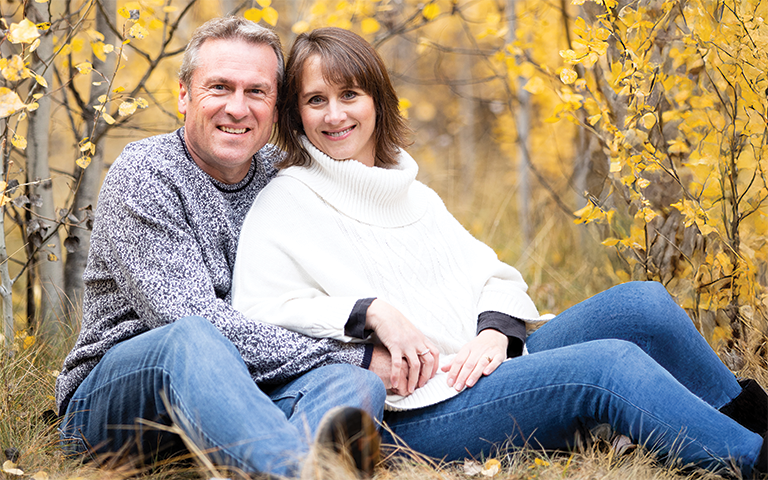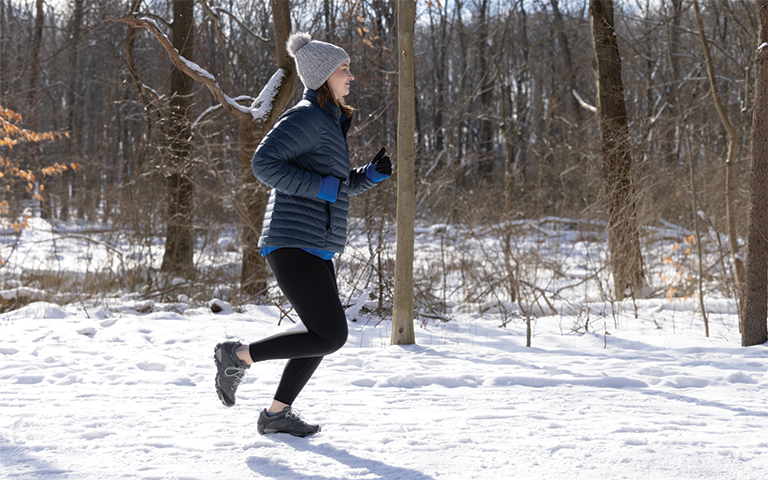As summer winds down and the rhythms of school, work, and extracurricular activities ramp up, many of us find our schedules stretched thin. The sun rises later, sets earlier, and our free moments seem to shrink with the daylight. Yet, amid the hustle, Scripture reminds us that “your body is a temple of the Holy Spirit” (1 Corinthians 6:19), and we are stewards of the health God has entrusted to us—not just spiritually, but physically as well.
So how can we stay healthy and active when time is short and energy is low?
Why movement matters
The science is clear: regular physical activity is one of the most important things you can do for your health. The Centers for Disease Control and Prevention (CDC) recommends at least 150 minutes of moderate-intensity exercise per week—ideally spread out over most days of the week. That’s just 30 minutes a day, five times a week. Exercise improves heart health, boosts mood, reduces the risk of chronic disease, strengthens bones and muscles, and helps regulate weight. For busy parents, students, and professionals alike, it also boosts energy and focus—making you more productive, not less.
But what if 30 uninterrupted minutes feels impossible?
The power of “bite-size” exercise
Good news: research increasingly supports the benefits of breaking your daily movement into shorter sessions. Studies show that three 10-minute periods of moderate exercise (like brisk walking, stair climbing, or bodyweight strength work) can offer similar cardiovascular and metabolic benefits as one 30-minute session. Consistency and intentionality matter most.
Here are a few easy ways to fit meaningful movement into your daily life:
- Morning warm-up: Start your day with five to 10 minutes of stretching, jumping jacks, or a quick walk around the block. It wakes up your body and mind.
- Active breaks at work or school: Stand up once an hour. Do a few squats, wall push-ups, or pace during phone calls. Even a 10-minute walk on your lunch break adds up.
- Family fitness: Instead of sitting on the couch after dinner, take a family walk, or if you have kids (or, like me, grandkids), run around with a game of tag.
- Weekend reset: Use part of Saturday or Sunday for a longer activity—bike rides, hikes, or a visit to a local park. Our family has a new favorite, enjoyed by young and old alike: pickleball!
These micro-movements benefit your body and refresh your spirit. Moving your body can be a form of prayerful reflection or an opportunity to listen to Scripture, a worship playlist, or a devotional podcast. Most of my book ‘reading’ is accomplished during outdoor runs.
A balanced view of health
As followers of Christ, our motivation for health should be different from the world’s. We don’t exercise to impress others or earn self-worth, but to honor God with our bodies, increase our capacity to serve others, and live joyfully in the calling He’s given us. A healthy body helps fuel a healthy heart, mind, and spirit.
Health isn’t only physical movement. Adequate sleep, proper hydration, and nourishing food are vital, especially when life gets busy. Making small, consistent choices—like drinking water instead of soda, packing a fruit and protein-rich snack, or turning off screens 30 minutes before bed—can also go a long way towards staying healthy.
Stewardship, not perfection
Perfection isn’t the goal—faithfulness is. There will be days when plans change, workouts get skipped, or the to-do list wins. That’s okay. Give yourself a break. Just don’t let those moments derail your efforts entirely. Progress over time, anchored in purpose, is what leads to lasting health.
We’re reminded in Galatians 6:6, that we “reap what we sow,” and verse nine tells us to “not grow weary in doing good, for at the proper time we will reap a harvest if we do not give up.” Staying healthy amid a busy life is doing good. It’s part of loving God with all your strength [Mark 12:30] and being ready for the work He’s prepared for you.
So this season, remember: you don’t need a gym membership or a free hour to stay active. You need a willing heart, a pinch of creativity, and a faithful perspective.
Let’s move forward—one step, one stretch, one flight of stairs at a time.
References
- U.S. Department of Health and Human Services. Physical Activity Guidelines for Americans, 2nd Edition. 2018. https://health.gov/paguidelines
- Rebar, A. L., et al. (2015). A meta-meta-analysis of the effect of physical activity on depression and anxiety in non-clinical adult populations. Health Psychology Review, 9(3), 366–378. https://doi.org/10.1080/17437199.2015.1022901
- Murphy, M. H., et al. (2009). Accumulated versus continuous exercise for health benefit: A review of empirical studies. Sports Medicine, 39(1), 29–43. https://doi.org/10.2165/00007256-200939010-00003
- Oja, P., et al. (2015). Effectiveness of physical activity promotion interventions in primary care: Systematic review and meta-analysis of randomized controlled trials. BMJ, 350, h759. https://doi.org/10.1136/bmj.h759 The Scope of the Problem




